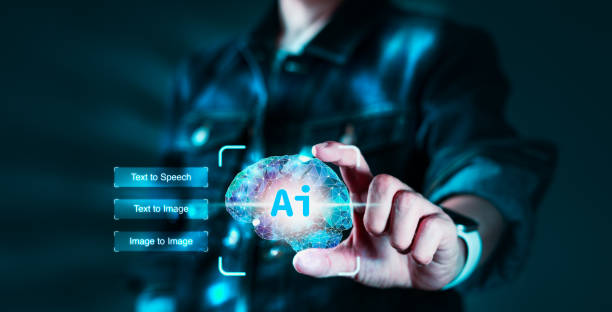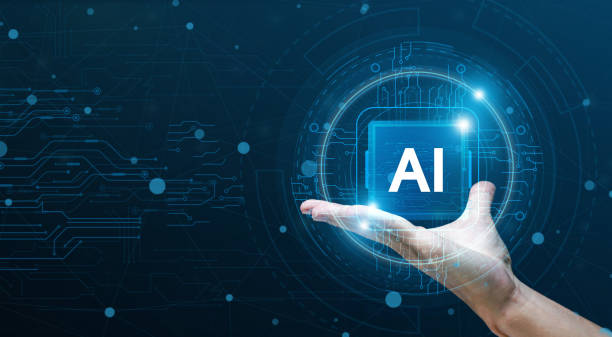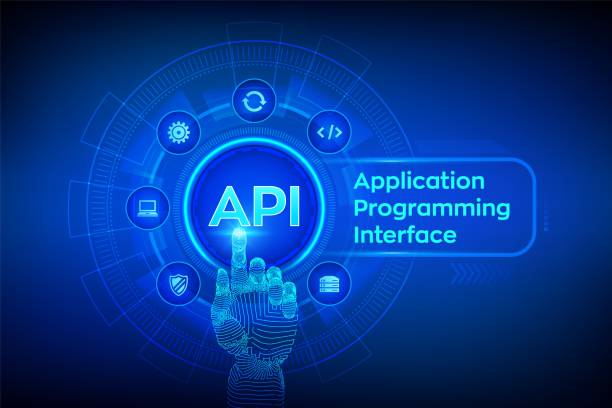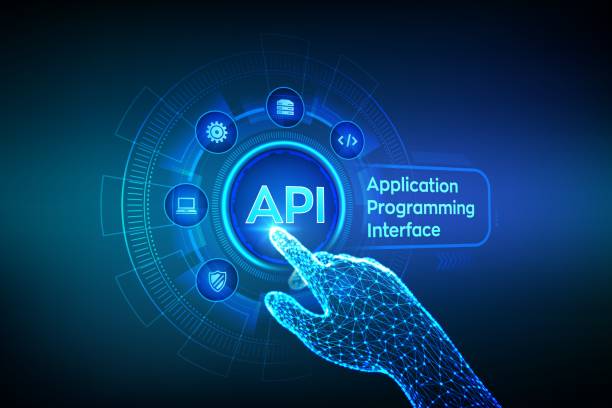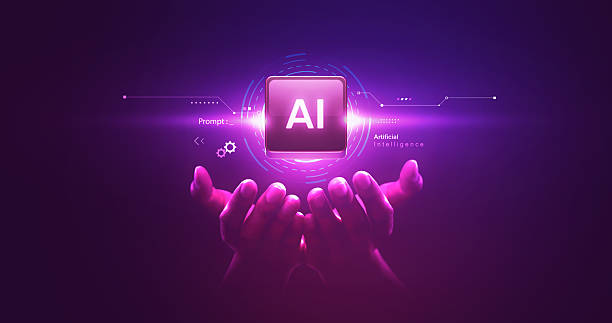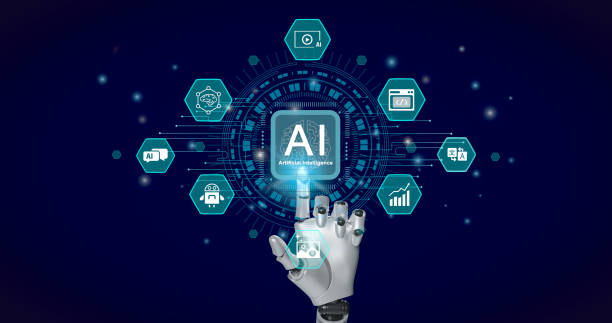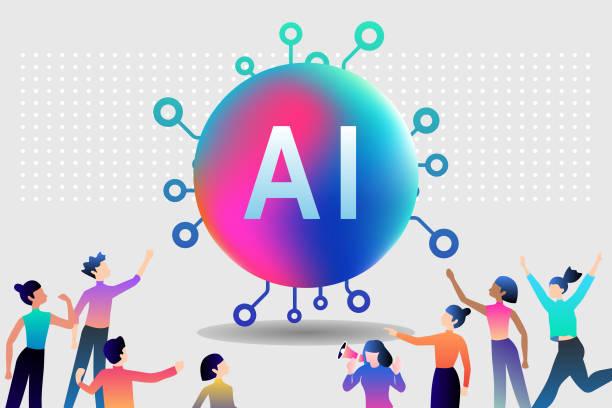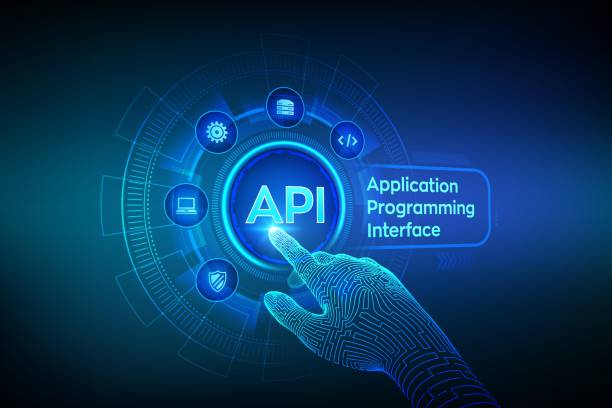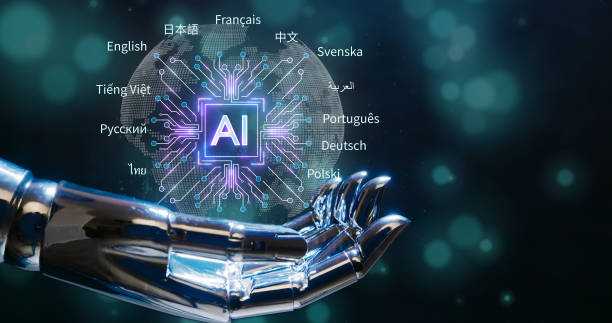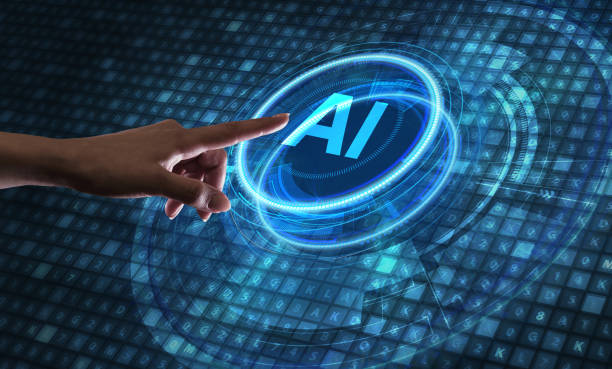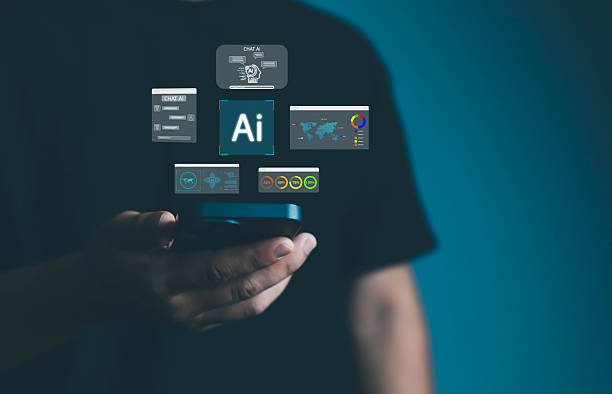What is an Artificial Intelligence Robot and How Does It Work?
An artificial intelligence robot, often known as an intelligent robot or AI Agent, is a computer program or mechanical device capable of performing tasks that typically require human intelligence.
These tasks include learning, reasoning, problem-solving, understanding natural language, and recognizing patterns.
The operation of artificial intelligence robots is based on algorithms and machine learning models.
These models are trained using extensive data to identify patterns and make decisions based on them.
For example, an #artificial_intelligence_robot designed for facial recognition is trained with millions of face images to accurately recognize new faces.
The main components of an artificial intelligence robot include:
- Sensors for collecting data from the environment
- Processor for analyzing data and making decisions
- Actuators for performing physical or virtual actions
- Machine learning algorithms to improve performance over time
Artificial intelligence robots have applications in various industries, including:
- Automotive (self-driving cars)
- Healthcare (diagnosing diseases and providing personalized treatments)
- Customer service (chatbots)
- Manufacturing (process automation)
This technology is advancing rapidly and is expected to play an even more important role in our lives in the future. Artificial intelligence robots, using deep learning and neural network capabilities, will be able to perform more complex and accurate tasks.
Are you bothered by losing customers who visit your site to buy?
Rasaweb is your specialized solution for having a successful online store.
✅ Significantly increase your online sales
✅ Build trust and professional branding with customers⚡ Get free consultation from Rasaweb experts!
Types of Artificial Intelligence Robots and Their Applications
Artificial intelligence robots can be divided into different categories based on the type of tasks they perform.
Some of the most important types of these robots include:
- Chatbots: These robots are designed to interact with users in natural language.
They can answer questions, provide information, and solve problems.
Chatbots are used in customer service, marketing, and training. - Image processing robots: These robots are capable of analyzing images and videos.
They can recognize objects, identify faces, and find patterns in images.
These robots are used in security, medicine, and industry. - Natural Language Processing (NLP) robots: These robots are designed to understand and generate natural language.
They can translate texts, summarize them, and detect emotions from text.
NLP robots are used in machine translation, sentiment analysis, and content generation. - Reinforcement learning robots: These robots learn through trial and error how to perform a task in the best possible way.
They learn optimal strategies by receiving rewards for correct actions and penalties for incorrect actions.
Reinforcement learning robots are used in games, robotics, and resource management. - Decision-making robots: These robots analyze data and model various scenarios to make the best decision for a specific problem.
They can assess risks and opportunities and provide recommendations.
Decision-making robots are used in finance, marketing, and supply chain management.
Click here to preview your posts with PRO themes ››
Each of these types of artificial intelligence robots has its own capabilities and limitations and is suitable for different applications.
Choosing the right type of artificial intelligence robot depends on the specific needs and goals of the organization or individual.
Advantages and Disadvantages of Using Artificial Intelligence Robots
The use of artificial intelligence robots has numerous advantages and disadvantages, which we will mention below:
Advantages:
- Increased Productivity: Artificial intelligence robots are capable of performing tasks around the clock without fatigue, leading to increased productivity and reduced costs.
- High Accuracy: Artificial intelligence robots, using extensive data and complex algorithms, are able to perform tasks with very high accuracy and reduce the probability of error.
- Improved Decision-Making: Artificial intelligence robots, by analyzing data and modeling various scenarios, can help make better decisions.
- Task Automation: Artificial intelligence robots can automatically perform repetitive and tedious tasks, allowing employees to focus on more important tasks.
- Improved Customer Experience: Artificial intelligence robots can provide customer service 24 hours a day and quickly answer customer questions and problems.
Disadvantages:
- High Cost: Designing, developing, and deploying artificial intelligence robots can be very expensive.
- Complexity: Artificial intelligence robots require a high level of expertise and technical knowledge, and their maintenance and updating can be complex.
- Ethical Issues: The use of artificial intelligence robots can raise ethical issues, such as job losses and discrimination.
- Data Dependence: The performance of artificial intelligence robots depends on the quality and quantity of the data with which they have been trained.
Incomplete or incorrect data can lead to poor performance. - Lack of Flexibility: Artificial intelligence robots are usually designed to perform specific tasks and cannot easily switch to new tasks.
| Advantages | Disadvantages |
|---|---|
| Increased Productivity | High Cost |
| High Accuracy | Complexity |
| Improved Decision-Making | Ethical Issues |
| Task Automation | Data Dependence |
| Improved Customer Experience | Lack of Flexibility |
Challenges of Implementing Artificial Intelligence Robots in Organizations
Implementing artificial intelligence robots in organizations comes with several challenges.
Some of the most important of these challenges include:
- Lack of Expertise: The shortage of skilled experts in the field of artificial intelligence is one of the biggest challenges in implementing artificial intelligence robots.
Organizations need to hire or train experts who can design, develop, and maintain artificial intelligence robots. - Data Access: Artificial intelligence robots need a lot of data to train and function properly.
Access to high-quality and relevant data can be a big challenge, especially in industries where data is limited or sensitive. - Integration with Existing Systems: Artificial intelligence robots must be integrated with the organization’s existing systems in order to function effectively.
This integration can be complex and time-consuming. - Scalability: Organizations must ensure that their artificial intelligence robots are scalable and can function well with increasing data volumes and numbers of users.
- Risk Management: The use of artificial intelligence robots can carry risks, such as data loss, cyberattacks, and incorrect decision-making.
Organizations must manage these risks and take appropriate security measures. - Organizational Acceptance: Organization employees may resist the use of artificial intelligence robots, especially if they feel that their jobs are at risk.
Organizations must reduce this resistance by providing appropriate training and information and promote a culture of technology acceptance.
By overcoming these challenges, organizations can benefit from the advantages of artificial intelligence robots and improve their performance. Artificial intelligence robots are known as tools for improving processes and increasing efficiency in organizations.
For more information about this topic, you can refer to related articles in the field of artificial intelligence and information technology management.
Does your company website perform as well as your brand deserves? In today’s competitive world, your website is your most important online tool. Rasaweb, a specialist in designing professional corporate websites, helps you to:
✅ Attract customer credibility and trust
✅ Turn website visitors into customers
⚡ Get a free consultation!
The Future of Artificial Intelligence Robots and Their Impact on Our Lives
The future of artificial intelligence robots is very bright and full of potential.
With the increasing advancements in the field of artificial intelligence, it is expected that artificial intelligence robots will play a more important role in our lives.
Some of the most important future trends in artificial intelligence robots include:
- Artificial General Intelligence (AGI): The development of AGI, which refers to artificial intelligence robots with human-like cognitive abilities, is one of the main goals of artificial intelligence researchers.
If AGI is achieved, artificial intelligence robots will be able to perform any task that a human can do. - Explainable AI (XAI): XAI refers to the development of artificial intelligence robots that can explain how they make decisions.
This helps increase trust and acceptance of artificial intelligence robots. - Ethical AI: As the impact of artificial intelligence robots on our lives increases, the importance of developing ethical artificial intelligence robots that act in accordance with human values becomes more important.
- Integration with the Internet of Things (IoT): Integrating artificial intelligence robots with the IoT can lead to the creation of smarter systems that are able to collect and analyze data from their surrounding environment and make decisions based on it.
- New Applications: It is expected that artificial intelligence robots will also find applications in new fields such as education, entertainment, and art.
However, it should be noted that the development of artificial intelligence robots also comes with challenges.
Issues such as security, privacy, and discrimination must be carefully considered to ensure the responsible and ethical use of artificial intelligence robots. Artificial intelligence robots are recognized as tools for improving quality of life and solving global problems.
With the growing development and progress of this technology, it is expected that our lives will be significantly affected.
How to Choose and Use the Right Artificial Intelligence Robot
Choosing and using the right artificial intelligence robot depends on your specific needs and goals.
Here are a few key tips for choosing and using an artificial intelligence robot:
- Determine Needs: First and foremost, you must accurately determine your needs.
What tasks do you want to assign to the artificial intelligence robot? What goals do you want to achieve using the artificial intelligence robot? - Research: After determining your needs, you should research the different types of artificial intelligence robots and their capabilities.
Which type of artificial intelligence robot is more suitable for your needs? Which artificial intelligence robot providers are more reputable? - Evaluate: After researching, you should evaluate the different artificial intelligence robots.
Is the artificial intelligence robot you are considering compatible with your existing systems? Is the artificial intelligence robot you are considering scalable? - Test: Before buying an artificial intelligence robot, it is best to test it.
Many artificial intelligence robot providers offer free trials. - Train: After purchasing an artificial intelligence robot, you must train your employees to use it effectively.
- Optimize: After using an artificial intelligence robot, you should continuously monitor and optimize its performance.
By following these tips, you can choose the right artificial intelligence robot and benefit from its advantages. Artificial intelligence robots are known as tools for improving processes and increasing efficiency in organizations.
By choosing and using this technology correctly, you can achieve the desired results.
Security and Privacy in Artificial Intelligence Robots
Security and privacy are among the most important issues in the use of artificial intelligence robots.
Since artificial intelligence robots deal with a lot of data, protecting this data from unauthorized access and abuse is very important.
Some of the most important security threats in artificial intelligence robots include:
- Cyberattacks: Artificial intelligence robots can be targeted by cyberattacks, which can lead to data loss, disruption of performance, and unauthorized access to systems.
- Reverse Engineering: The algorithms of artificial intelligence robots can be reverse engineered, which can lead to the disclosure of trade secrets and sensitive information.
- Data Poisoning Attacks: Attackers can introduce incorrect or destructive data into the training data of artificial intelligence robots, which can lead to poor performance and incorrect decision-making.
- Discrimination: Artificial intelligence robots can be discriminatory if they are trained with discriminatory data.
To protect security and privacy in artificial intelligence robots, the following measures should be taken:
- Use of Encryption Methods: Sensitive data must be protected using encryption methods.
- Access Control: Access to data and systems of artificial intelligence robots must be restricted and controlled.
- Monitoring and Auditing: The performance of artificial intelligence robots must be continuously monitored and audited to identify any suspicious activity.
- Training: Employees should be trained on security threats and methods of protecting artificial intelligence robots.
- Development of Ethical Artificial Intelligence Robots: Artificial intelligence robots should be developed taking into account ethical principles to prevent discrimination and abuse.
| Security Threat | Description |
|---|---|
| Cyberattacks | Data Loss, Performance Disruption |
| Reverse Engineering | Disclosure of Trade Secrets and Sensitive Information |
| Data Poisoning Attacks | Poor Performance and Incorrect Decision-Making |
| Discrimination | Discriminatory Decision-Making |
The Role of Artificial Intelligence Robots in Iranian Industry
Artificial intelligence robots can play an important role in the development of Iranian industry.
By using artificial intelligence robots, productivity can be increased, costs can be reduced, and the quality of products and services can be improved.
Some of the areas where artificial intelligence robots can be used in Iranian industry include:
- Automation: Artificial intelligence robots can automatically perform production processes, which leads to increased productivity and reduced costs.
- Quality Control: Artificial intelligence robots can automatically check and control the quality of products and services, which leads to improved quality and reduced waste.
- Supply Chain Management: Artificial intelligence robots can intelligently manage the supply chain, which leads to reduced costs and improved efficiency.
- Customer Service: Artificial intelligence robots can provide customer service 24 hours a day and quickly answer customer questions and problems.
- Research and Development: Artificial intelligence robots can assist researchers in research and development processes, leading to the discovery of new products and services.
However, in order to successfully use artificial intelligence robots in Iranian industry, challenges such as lack of expertise, data access, and organizational acceptance must be addressed.
Also, appropriate policies and regulations should be developed to support the development and use of artificial intelligence robots.
Artificial intelligence robots in Iranian industry are considered an opportunity for transformation and progress.
With proper planning and investment, this technology can be used to its best advantage.
Did you know that the first impression customers have of your company is your website? Multiply your business credibility with a powerful corporate website from Rasaweb!
✅ Exclusive and eye-catching design tailored to your brand
✅ Improved user experience and increased customer acquisition
⚡ Get a free consultation!
The Impact of Artificial Intelligence Robots on the Labor Market
The impact of artificial intelligence robots on the labor market is a topic of discussion and debate.
Some experts believe that artificial intelligence robots will lead to job losses, while others believe that artificial intelligence robots will create new jobs and improve the quality of jobs.
In general, it can be said that artificial intelligence robots have different effects on different jobs.
Some jobs that are repetitive and routine are more at risk of automation.
In contrast, jobs that require creativity, critical thinking, and social skills are less at risk of automation.
To reduce the negative impacts of artificial intelligence robots on the labor market, the following measures should be taken:
- Training and Retraining: Employees need to learn new skills that are compatible with the needs of the new labor market.
- Support for Entrepreneurship: Entrepreneurship and the creation of new jobs should be supported.
- Development of Social Policies: Appropriate social policies should be developed to support people who lose their jobs.
Artificial intelligence robots in the labor market, as a transformative force, cannot be ignored.
With proper planning and preparation, this technology can be used to its best advantage and its negative effects can be avoided. Artificial intelligence robots, by increasing productivity and creating new opportunities, can contribute to economic development.
Will Artificial Intelligence Robots Replace Humans?
The question of whether artificial intelligence robots will replace humans is one of the fundamental questions in the field of artificial intelligence.
The answer to this question depends on our definition of replacement.
If by replacement we mean that artificial intelligence robots perform all the tasks of humans and humans no longer need to work, the answer is no.
Currently, artificial intelligence robots are not capable of performing all the tasks of humans, and it is unlikely that they will be able to do so even in the future.
However, if by replacement we mean that artificial intelligence robots perform some of the tasks of humans and lead to changes in the nature of jobs and the creation of new jobs, the answer is yes.
Currently, artificial intelligence robots perform many repetitive and routine tasks and allow humans to focus on more important and creative tasks.
Also, artificial intelligence robots create new jobs that did not exist before.
Therefore, it can be said that artificial intelligence robots will not replace all humans, but they will have a significant impact on the labor market and the way work is done.
To prepare for these changes, we need to learn new skills, support entrepreneurship, and develop appropriate social policies. Artificial intelligence robots, as a powerful tool, can help humans perform tasks and improve life.
By using this technology correctly, the desired results can be achieved.
For more information about this topic, you can refer to related articles in the field of artificial intelligence and the future of work.
Frequently Asked Questions
| Row | Question | Answer |
|---|---|---|
| 1 | What is an Artificial Intelligence Robot? | An artificial intelligence robot is a machine capable of understanding, reasoning, learning, and problem-solving and can perform complex tasks with relative autonomy. |
| 2 | What are the most important applications of artificial intelligence robots? | Main applications include industrial manufacturing, customer service (chatbots), medicine and surgery, self-driving transportation, space exploration, and military affairs. |
| 3 | What is the main difference between an artificial intelligence robot and a regular robot? | A regular robot only follows programmed instructions, while an artificial intelligence robot can learn from data, make decisions, and adapt to new environments. |
| 4 | How do artificial intelligence robots learn? | They identify patterns and improve their performance through machine learning algorithms (such as deep learning, reinforcement learning) and processing vast amounts of data. |
| 5 | Can artificial intelligence robots have emotions? | Currently, artificial intelligence robots do not have real emotions in the human sense. They can mimic or recognize emotions, but they do not understand or experience them. |
| 6 | What are the current limitations of artificial intelligence robots? | Limitations include the need for a lot of data, the inability to understand abstract concepts, the lack of real creativity, ethical issues, and the challenges of generalizability in new environments. |
| 7 | What is the role of artificial intelligence in the development of humanoid robots? | Artificial intelligence helps humanoid robots to walk, maintain their balance, understand their environment, interact with humans, and perform complex tasks. |
| 8 | How is the future of artificial intelligence robots predicted? | It is predicted that artificial intelligence robots will become smarter, more autonomous, and capable of performing more complex tasks in everyday life and industry, and their interaction with humans will increase. |
| 9 | Can artificial intelligence robots replace all human jobs? | It is unlikely that all human jobs will be replaced. Robots take on many repetitive and dangerous tasks, but jobs that require creativity, empathy, and ethical judgment will remain. |
| 10 | What ethical and social challenges are raised by the expansion of artificial intelligence robots? | Challenges include issues related to privacy, data security, ethical decision-making by robots, impact on employment, and accountability in case of errors. |
And other services of Rasa Web Advertising Agency in the field of advertising
Smart custom software: An effective tool to increase sales by customizing the user experience.
Smart SEO: A dedicated service for customer behavior analysis based on intelligent data analysis.
Smart UI/UX: An effective tool for user interaction with a content strategy focused on SEO.
Smart Digital Branding: A dedicated service to grow sales based on marketing automation.
Smart Custom Software: A professional solution for analyzing customer behavior with a focus on dedicated programming.
And more than hundreds of other services in the field of Internet advertising, advertising consulting, and organizational solutions
Internet Advertising | Advertising Strategy | Advertisement Report
Resources
What is an Artificial Intelligence Robot?
,All About Artificial Intelligence Robots
,Introducing Artificial Intelligence Robots
,What is a Smart Robot?
? Are you ready to transform your business in the digital world? Rasaweb Afarin Digital Marketing Agency, with a specialized team and a new approach, provides comprehensive and effective solutions for your powerful presence on the web.
From website design with a modern user interface and professional SEO to intelligent social media management and targeted advertising campaigns, we provide everything you need for your online shine. Take a big step towards lasting success with Rasaweb Afarin.
📍 Tehran, Mirdamad Street, next to the Central Bank, Kazerun Jonoubi Alley, Ramin Alley No. 6
“`


